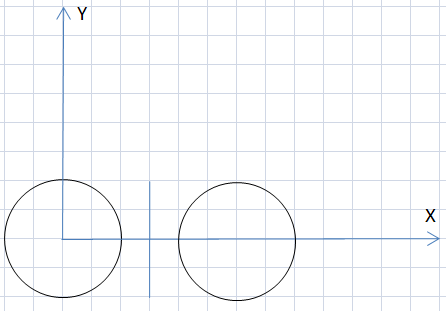| Codeforces Round 203 (Div. 2) |
|---|
| Finished |
Emperor Palpatine loves owls very much. The emperor has some blueprints with the new Death Star, the blueprints contain n distinct segments and m distinct circles. We will consider the segments indexed from 1 to n in some way and the circles — indexed from 1 to m in some way.
Palpatine defines an owl as a set of a pair of distinct circles (i, j) (i < j) and one segment k, such that:
- circles i and j are symmetrical relatively to the straight line containing segment k;
- circles i and j don't have any common points;
- circles i and j have the same radius;
- segment k intersects the segment that connects the centers of circles i and j.
Help Palpatine, count the number of distinct owls on the picture.
The first line contains two integers — n and m (1 ≤ n ≤ 3·105, 2 ≤ m ≤ 1500).
The next n lines contain four integers each, x1, y1, x2, y2 — the coordinates of the two endpoints of the segment. It's guaranteed that each segment has positive length.
The next m lines contain three integers each, xi, yi, ri — the coordinates of the center and the radius of the i-th circle. All coordinates are integers of at most 104 in their absolute value. The radius is a positive integer of at most 104.
It is guaranteed that all segments and all circles are dictinct.
Print a single number — the answer to the problem.
Please, do not use the %lld specifier to output 64-bit integers is С++. It is preferred to use the cout stream or the %I64d specifier.
1 2
3 2 3 -2
0 0 2
6 0 2
1
3 2
0 0 0 1
0 -1 0 1
0 -1 0 0
2 0 1
-2 0 1
3
1 2
-1 0 1 0
-100 0 1
100 0 1
0
Here's an owl from the first sample. The owl is sitting and waiting for you to count it.

| Name |
|---|




